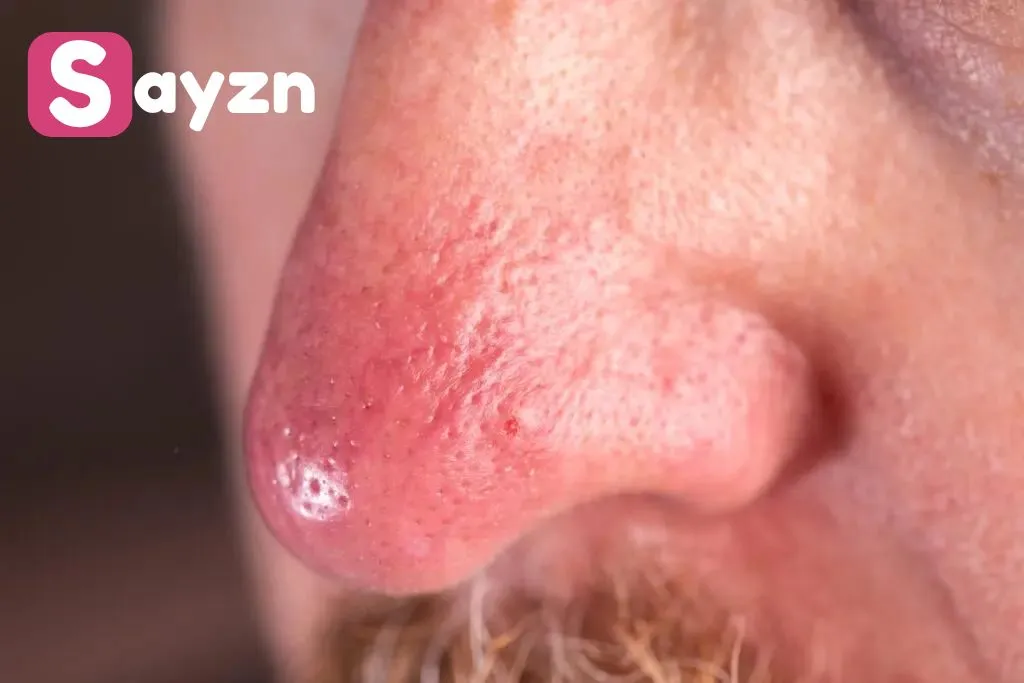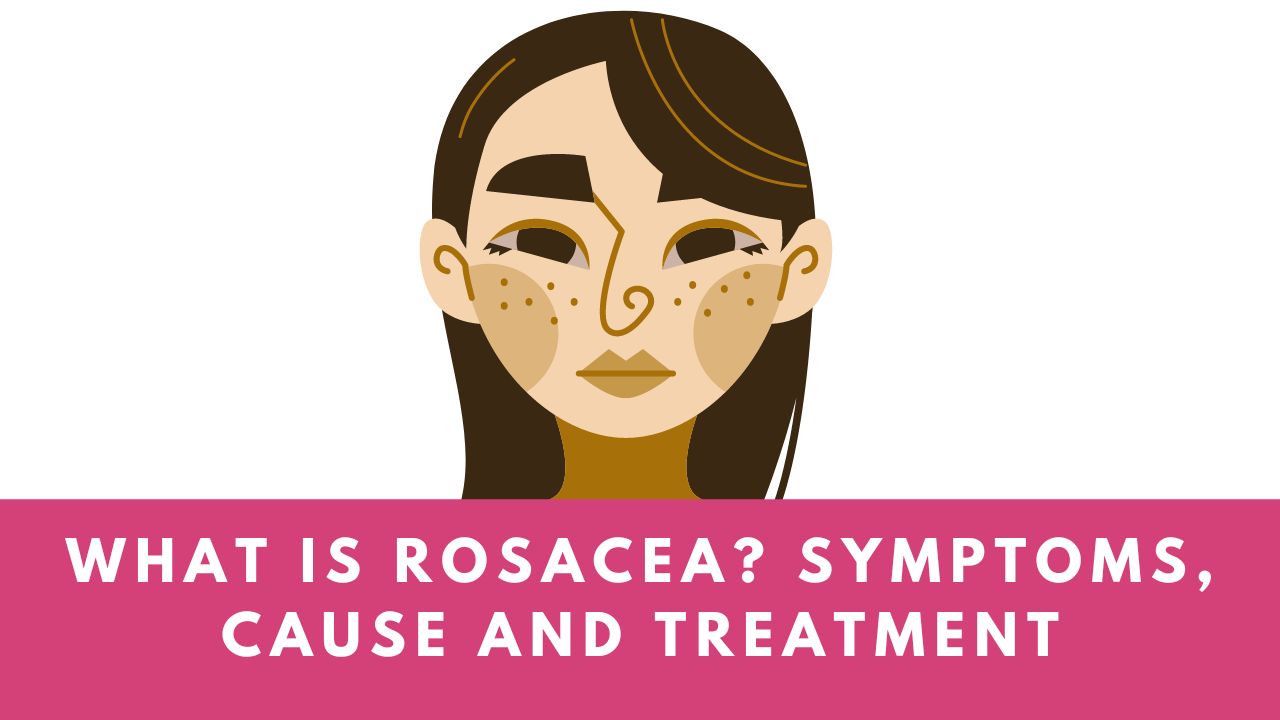Rosacea is a chronic disease flammable Disease in which blood vessels in the skin expand. The onset of the disease leads to blockage of blood vessels or papules, and acne-like pimples sometimes appear. When the disease occurs, it appears on the cheeks, nose, forehead, chin and other parts of the body. It also develops quickly and can break out over a large area, usually due to alcohol poisoning. , it is necessary to carry out timely and appropriate treatment and ensure that medications are not used indiscriminately.
Many people experience symptoms of depression due to rosacea throughout their lives. The occurrence of rosacea has significantly impaired the physical and mental development of patients. For this reason, when rosacea occurs, we must pay special attention in daily life. What is Rosacea?
Chronic inflammation
Rosacea is actually a chronic inflammation and dilation of blood vessels in the skin, which can lead to blockage of blood vessels or the appearance of papules. Sometimes acne-like pimples and large-scale breakouts can occur on the face. Rosacea usually occurs in areas such as the cheeks and nose, but it can also appear on the forehead and chin. Unfortunately, the pathology of rosacea is still not understood and researchers have not been able to determine the true cause of rosacea.
The initial onset of rosacea usually manifests itself as concentrated, significant congestion on the face. If this congestion is not effectively controlled, the capillaries in the skin can rupture, leaving an indelible red color on the epidermis. In some people with rosacea, the skin swells and thickens, and if this occurs in the area around the nose, a bulbous rhinophyma may form, which is common in some people with alcohol-induced rosacea, also called rhinophyma. Rosacea. Some patients also experience a stinging and gritty feeling in the eyes. Rosacea sometimes appears as pustules on the skin and is therefore often confused with acne. This skin condition can be extremely uncomfortable for patients as it affects their appearance and erosion can be emotionally depressing and affect their self-confidence.
The occurrence of rosacea caused great damage to the patients’ healthy skin. If treatment is not treated in a timely manner, more serious consequences may occur. Therefore, everyone is worried about the appearance of rosacea in daily life. We must pay close attention, cooperate in timely medical examination and treatment, and never take medicine without authorization.
common symptoms of rosacea
Rosacea is generally divided into three stages depending on the course of the disease.
The first stage is also called the erythema stage. It manifests as persistent moderate facial erythema accompanied by isolated telangiectasias. Erythematotelangiectatic rosacea.
The second stage is also called the papulopustular stage. Papulopustular rosacea presents as persistent facial erythema accompanied by massive telangiectasia, papules, and pustules.

The third stage is also called the rhinophyma stage. Persistent dark erythema on the nose and face, dense capillary dilatation and radial distribution of blood vessels, especially in the nose. Accompanied by papules and pustules, patchy swellings and nodules of varying degrees of intensity can also occur.
Special Classification – Eye Type: Up to 50% of rosacea patients may have eye symptoms that include a foreign body sensation, a burning or stinging sensation in the eyes, dryness, itching, sensitivity to light, and blurred vision, with the sclera and sclera visible. Telangiectasia or periorbital edema elsewhere.
Choosing the right cosmetics and using them correctly can help maintain the health and beauty of the skin. But what are the consequences of incorrect use? The lack of obvious skin care effects is unmatched. Once an adverse reaction to cosmetics occurs, it can lead to damage to your personal skin health. In severe cases, it affects your appearance, mood, and social interactions. Only by understanding cosmetics can we choose and use them correctly.
Cause of rosacea
Rosacea generally refers to acne, which is mainly caused by endocrine disorders, abnormal keratinization of the sebaceous glands, infections and other factors. It is recommended that patients visit the hospital in time to determine the cause and initiate treatment to avoid delaying the disease.
1. Endocrine disorders
The appearance of acne may be related to the strong secretion of androgens. When androgen levels in the body increase, the sebaceous glands secrete a large amount of sebum, which accumulates in the sebaceous ducts, causing clogging of hair follicles and triggering the appearance of acne. At this time, you can follow the doctor’s advice and apply erythromycin ointment, fusidic acid cream and other medications locally for treatment. Patients should maintain a regular daily schedule, avoid staying up late, get enough sleep, and maintain a good mood.
2. Abnormal keratinization of the sebaceous glands
Abnormal keratosis of the sebaceous glands is a chronic disease of the sebaceous glands. The causes are mainly related to genetics. In some patients, the cause is vitamin A deficiency and other factors. The main symptom of patients is fatty papules on the face. Breast and back lesions and skin lesions include acne, pustules, nodules, cysts, etc. The skin lesions may contain keratin plugs, which are accompanied by symptoms such as enlarged pores and blocked sebaceous duct openings. Patients can follow the doctor’s advice and use topical retinoic acid cream, benzoyl peroxide gel and other medications for treatment. Patients may also take isotretinoin soft capsules, spironolactone tablets, and other medications as directed by their doctor.
3. Infection
When Propionibacterium acnes is infected. It triggers an inflammatory reaction in the skin, keratinizes the sebaceous ducts and causes the appearance of red papules and pustules on the skin, resulting in erythema and acne. At this time, the patient can use erythromycin ointment, fusidic acid cream and other medications as directed by the doctor. Patients may also take oral minocycline hydrochloride capsules, doxycycline hydrochloride tablets, and other medications as directed by their doctor.
In addition to the common factors mentioned above, the cause can also be incorrect medication. You should go to the hospital in time to carry out the relevant examinations. It is necessary to clarify the cause and then carry out targeted treatment.
Rosacea treatment
Rosacea generally cannot be completely cured. Although treatments are available to relieve symptoms and control the condition, there is rarely a complete cure for acne. Rosacea is a chronic inflammatory skin disease. This is often caused by a variety of factors, including excess oil, bacterial infections and skin inflammation.
Although there are a variety of treatments. For example, oral and topical medications, topical cleansing and care. Their effectiveness varies from person to person and relapses sometimes occur. There is no guarantee that every patient will be completely free of acne.
Some factors also increase the risk of acne recurrence, such as: B. Lifestyle, eating habits, psychological stress, etc. During the treatment process, in addition to medication, good lifestyle habits and mental health are also important.
By understanding these, you can take proactive prevention and management measures to avoid the negative health effects of rosacea. Patients should work closely with their doctor and adopt a treatment plan that is right for them to maximize the control and treatment of rosacea.



